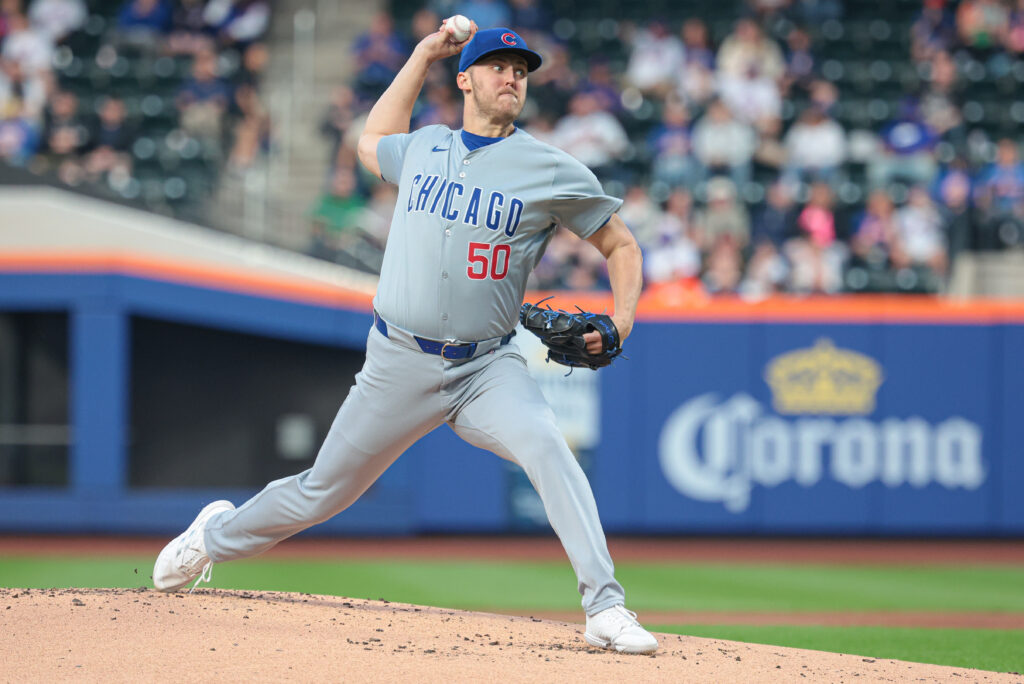The Cubs’ deadline trajectory has been a hot topic in recent weeks, with the team sitting at or near the bottom of the NL Central, but also within striking distance of the final NL Wild Card spot. They’ve seemingly explored options on both ends of the buying/selling spectrum, and have shown interest in Toronto catcher Danny Jansen while there were also reportedly discussions with both the Yankees and Red Sox about the possibility of a Jameson Taillon trade. The Cubs lost their first two games after the All-Star break to a D-backs team now tied for the final Wild Card spot, though they avoided a sweep in an extra-inning victory on Sunday.
While the Cubs are 3.5 games behind in the Wild Card hunt, the latest report from Patrick Mooney, Ken Rosenthal and Will Sammon of The Athletic indicates that the Cubs aren’t planning on being buyers at next week’s trade deadline. That’s not an indication that there will be any sort of high-profile sale for the Cubs, however. Chicago hopes to be in contention next year and likely won’t move players under control unless they get big-league-ready talent in return.
As for the Cubs’ rental players, there just isn’t much for other clubs to buy. Signed Smyly sits at an impressive 2.92 ERA in 37 relief innings, but he’s also walked 10.2 percent of his opponents and is playing on a contract that other teams want to avoid. Smyly is due the balance of an $8.5 million salary for the current season (approximately $3.2 million) in addition to a $2.5 million buyout for a $10 million mutual option for the 2025 season.
Right Kyle Hendriks is a free agent at the end of the season, but with a $16 million salary and a 6.69 ERA, he’s unlikely to attract interest (unless the Cubs eat his entire contract, perhaps). Hector Neris has a 3.74 ERA and a 24.2% strikeout rate in 33 2/3 innings — but he’s also walked a career-worst 16.1% of opponents. Neris is playing on a $9 million salary, and his $9 million club option will convert to a player option if he appears in 24 more games this season (60 total). That should scare off any potential interest. Cody Bellinger could become a free agent at the end of the season, but he is on the injured list with a broken finger. Furthermore, the two opt-out clauses in his three-year contract would make it extremely difficult to trade him anyway.
The Athletic’s report at least raises the speculative possibility of listening to offers for a starter Justin Steelealthough with three seasons of club control remaining, the price would likely be as high as or even higher than the asking price for the crosstown ace Garrett Crochet (two years of club control remaining) and AL Cy Young leader Tarik Skubal (the latter of whom is not expected to be traded). There’s no reason to think the Cubs would trade Steele, but listen to see if anyone with a Juan Soto-like return for fifth place in last year’s NL Cy Young competition is reasonable.
As for Taillon, it would make sense to move him even if the team isn’t looking to make a big sale. When signing a free agent to a long-term deal, a team is most interested in the first few years of that contract. The 2025-26 seasons will be Taillon’s age-33 and age-34 campaigns. He’ll make $18 million in each season on his slightly backloaded $68 million deal. Moving him would free up some money to potentially spend on a younger pitcher this offseason — or perhaps on a different area of need entirely.
The Cubs check Steele, Shota-Imanaga, Javier Assad, Ben Brown, Hayden Wesneski And Jordan fuse until at least the 2027 season. Outlook Cade Horton And Brandon Vogelsell are rising through the system quickly. There is some depth to deal with, and a Taillon trade would bring in talent, shave off future salary, and reduce future luxury tax liabilities. Taillon wouldn’t be anywhere near the same kind of catch as Steele for a number of reasons (age, salary, overall talent level), but there aren’t many arms available, so the Cubs could theoretically take advantage of that shortage and see what the market brings.
It’s also worth noting that most teams’ plans are still quite fluid at this time of year. While teams facing an eight-, nine-, 10-, or more-game gap in their respective postseason goals will certainly be focused on selling (just as clubs in the opposite position will primarily focus on adding), nearly half of the teams in baseball are in a relative purgatory between those two extremes of the spectrum. There’s currently a three-way tie for the third NL Wild Card spot (Mets, D-Backs, Padres), with another five teams within four games of that final spot — including the Cubs. In the American League, four teams are within six games of the final Wild Card spot.
For example, if the Cubs were to win six or seven straight starting today, they’d likely be much more open to the idea of adding some players. That’s especially true since their next three games are against the division-leading Brewers. But a winning streak like that is always a long shot, and it’s notable that Chicago doesn’t see itself as a team that will trade even lower-caliber minor league talent in exchange for some marginal rental upgrades just yet. Time will tell if the players on the field can push the front office to take a more aggressive stance, but for now it seems likely that the Cubs will have a relatively quiet deadline.
